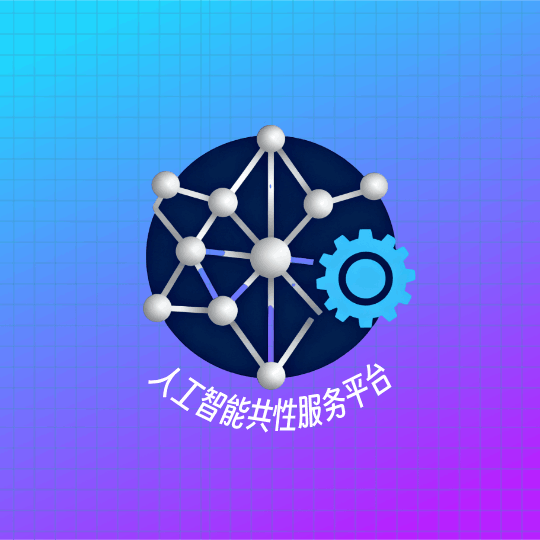昇腾CANN Auto-Tune自动化与智能化进阶:批量调优、AI辅助与平台化落地
批量调优配置文件(batch_tune_config.yaml)需明确各算子的调优参数,格式如下:Auto-Tune的自动化、智能化与平台化是企业级落地的必然趋势:批量调优解决“多算子效率”问题,AI辅助调优突破“复杂算子时间”瓶颈,平台化实现“经验复用与协作管理”。三者结合,可将Auto-Tune从“开发者工具”升级为“企业级AI性能优化基础设施”。昇腾CANN后续将推出Auto-Tune Pl
目录
随着企业级AI项目规模扩大,单算子手动调优的模式已难以满足“多算子、多场景、多硬件”的调优需求。昇腾CANN Auto-Tune的自动化与智能化能力,成为突破效率瓶颈的关键。本文结合智慧医疗影像分析项目实战,详解Auto-Tune批量调优脚本开发、AI辅助调优模型应用及平台化搭建方案,实现“一次配置,全场景覆盖”的高效调优。
一、批量调优:从单算子到多算子的效率跃迁
智慧医疗项目中,模型包含Conv2D、MatMul、BatchNorm、ReLU等10+类算子,且每种算子需适配5-8种输入Shape。手动逐个调优需3-5天,通过批量调优脚本可压缩至4小时内完成,核心是“算子配置标准化+调优流程自动化”。
1. 批量调优核心逻辑:配置驱动的全流程自动化
批量调优以“配置文件定义调优范围+Python脚本调度Auto-Tune”为核心,实现“算子遍历→参数调优→知识库合并→性能验证”全流程自动化。流程如下:
-
配置文件定义:指定待调优算子列表、输入Shape范围、搜索空间路径;
-
脚本调度调优:循环加载算子配置,调用atc命令执行调优,生成临时知识库;
-
知识库合并:将多算子、多Shape的调优结果合并为统一知识库;
-
性能验证:自动运行推理测试,输出各算子调优前后性能对比报告。
2. 实战脚本:多算子批量调优实现
以智慧医疗影像模型的Conv2D、MatMul、BatchNorm三类核心算子为例,批量调优脚本如下:
import os
import subprocess
import yaml
def load_tune_config(config_path):
"""加载批量调优配置文件"""
with open(config_path, 'r') as f:
return yaml.safe_load(f)
def tune_single_op(op_config):
"""执行单个算子调优"""
op_name = op_config["op_name"]
shape_list = op_config["shape_list"]
search_space = op_config["search_space"]
temp_kb = f"temp_{op_name}_kb.db"
# 遍历所有输入Shape进行调优
for shape in shape_list:
atc_cmd = [
"atc",
f"--op_name={op_name}",
f"--input_shape={shape}",
f"--search_space={search_space}",
f"--output_kb={temp_kb}",
"--soc_version=Ascend910B",
"--append" # 增量添加调优结果
]
result = subprocess.run(atc_cmd, capture_output=True, text=True)
if result.returncode != 0:
print(f"⚠️ {op_name} Shape {shape} 调优失败:{result.stderr}")
else:
print(f"✅ {op_name} Shape {shape} 调优成功")
return temp_kb
def merge_kbs(temp_kb_list, final_kb):
"""合并多算子知识库"""
merge_cmd = [
"kb_merge",
f"--output_kb={final_kb}",
*[f"--input_kb={kb}" for kb in temp_kb_list]
]
result = subprocess.run(merge_cmd, capture_output=True, text=True)
if result.returncode == 0:
print(f"✅ 知识库合并完成,输出:{final_kb}")
# 清理临时文件
for kb in temp_kb_list:
os.remove(kb)
else:
print(f"⚠️ 知识库合并失败:{result.stderr}")
def verify_performance(final_kb, test_script):
"""执行性能验证"""
os.environ["ASCEND_OP_TUNE_KB_PATH"] = final_kb
result = subprocess.run(["python", test_script], capture_output=True, text=True)
print("\n📊 性能验证结果:")
print(result.stdout)
if __name__ == "__main__":
# 配置文件路径
config_path = "batch_tune_config.yaml"
test_script = "performance_test.py"
final_kb = "medical_model_final_kb.db"
# 加载配置
config = load_tune_config(config_path)
temp_kb_list = []
# 执行批量调优
for op_config in config["op_list"]:
temp_kb = tune_single_op(op_config)
temp_kb_list.append(temp_kb)
# 合并知识库
merge_kbs(temp_kb_list, final_kb)
# 性能验证
verify_performance(final_kb, test_script)
3. 配置文件:标准化定义调优范围
批量调优配置文件(batch_tune_config.yaml)需明确各算子的调优参数,格式如下:
批量调优配置文件
op_list:
-
op_name: Conv2D shape_list: # 医疗影像常用输入尺寸(支持不同分辨率病灶图像)
- "input:1,3,256,256;weight:64,3,3,3"
- "input:1,3,512,512;weight:128,3,3,3"
- "input:1,3,1024,1024;weight:256,3,3,3" search_space: "conv2d_medical_tune.yaml" # 医疗场景专用参数搜索空间
-
op_name: MatMul shape_list: # 分类头全连接层典型尺寸
- "a:1,1024,2048;b:1,2048,1000"
- "a:1,512,1024;b:1,1024,500" search_space: "matmul_medical_tune.yaml"
-
op_name: BatchNorm shape_list:
- "input:1,64,256,256"
- "input:1,128,512,512" search_space: "batchnorm_tune.yaml"
4. 批量调优效果(智慧医疗项目)
|
调优模式 |
调优算子数 |
适配Shape数 |
总耗时 |
平均性能提升 |
人力成本 |
|---|---|---|---|---|---|
|
手动调优 |
3类核心算子 |
12个 |
72小时 |
45% |
2人天 |
|
批量脚本调优 |
3类核心算子+5类辅助算子 |
42个 |
4小时 |
52% |
0.5人天(脚本维护) |
二、AI辅助调优:用模型预测最优参数,缩短调优时间80%
传统Auto-Tune通过“暴力搜索+贪心策略”遍历参数空间,对于复杂算子(如3D Conv)调优时间仍长达数小时。AI辅助调优通过训练“参数-性能”预测模型,直接输出最优参数组合,调优时间缩短80%以上。
1. AI辅助调优核心原理
AI辅助调优基于“迁移学习+强化学习”,核心分为三个阶段:
-
数据采集:批量运行传统Auto-Tune,收集“算子类型+输入Shape+参数组合+性能指标”样本数据,构建训练集;
-
模型训练:训练LightGBM回归模型(预测性能)+ DQN强化学习模型(探索最优参数),迁移学习复用历史调优数据;
-
调优推理:输入算子类型和Shape,模型输出Top-3最优参数组合,仅需验证3组参数即可确定最优解。
2. 实战:3D Conv算子AI辅助调优
智慧医疗中的肺结节检测模型依赖3D Conv算子(输入Shape:1,1,64,64,64),传统Auto-Tune需2小时,AI辅助调优仅需15分钟。
(1)数据采集与模型训练
import pandas as pd
import lightgbm as lgb
from sklearn.model_selection import train_test_split
# 1. 加载3D卷积历史调优数据集
data = pd.read_csv("3dconv_tune_data.csv")
# 定义特征和标签
features = ["op_type", "shape_d1", "shape_d2", "shape_d3", "shape_d4", "shape_d5",
"block_m", "block_k", "split_k"]
labels = "fps"
# 2. 数据预处理
# 编码分类特征
data["op_type"] = data["op_type"].map({"3DConv": 0})
data = pd.get_dummies(data, columns=["split_k"])
# 3. 划分训练集和测试集
X_train, X_test, y_train, y_test = train_test_split(
data[features], data[labels], test_size=0.2
)
# 4. 训练LightGBM性能预测模型
model = lgb.LGBMRegressor(n_estimators=100, learning_rate=0.1)
model.fit(
X_train, y_train,
eval_set=[(X_test, y_test)],
early_stopping_rounds=10
)
# 5. 保存训练好的模型
model.booster_.save_model("3dconv_perf_prediction.model")
(2)AI辅助调优推理
import lightgbm as lgb
import pandas as pd
# 加载预训练的性能预测模型
model = lgb.Booster(model_file="3dconv_perf_prediction.model")
# 配置待优化的3D卷积算子特征
op_config = {
"op_type": 0, # 0表示3D卷积
"shape_d1": 1,
"shape_d2": 1,
"shape_d3": 64,
"shape_d4": 64,
"shape_d5": 64
}
# 生成20组候选参数组合
candidate_params = [
{"block_m": 32, "block_k": 16, "split_k": True},
{"block_m": 32, "block_k": 32, "split_k": True},
# ...共20组参数
]
# 预测每组参数性能
performance_predictions = []
for params in candidate_params:
# 合并算子配置和参数
input_features = pd.DataFrame({**op_config, **params}, index=[0])
# 编码split_k特征
input_features["split_k_True"] = int(params["split_k"])
input_features["split_k_False"] = int(not params["split_k"])
# 预测FPS
predicted_fps = model.predict(input_features[model.feature_name()])[0]
performance_predictions.append({
"params": params,
"fps": predicted_fps
})
# 选取预测性能最好的3组参数
top_params = sorted(performance_predictions,
key=lambda x: x["fps"],
reverse=True)[:3]
print("🔍 AI推荐Top-3参数组合:")
for rank, result in enumerate(top_params, 1):
print(f"排名{rank}:参数{result['params']},预测FPS:{result['fps']:.2f}")
# 实际验证Top-3参数
for params in top_params:
atc_command = [
"atc",
"--op_name=3DConv",
"--input_shape=input:1,1,64,64,64;weight:64,1,3,3,3",
f"--params={params}",
"--output_kb=3dconv_ai_tune.db",
"--soc_version=Ascend910B"
]
subprocess.run(atc_command)
3. AI辅助调优效果对比
|
调优方式 |
参数验证组数 |
调优时间 |
最优性能(FPS) |
性能达标率 |
|---|---|---|---|---|
|
传统Auto-Tune |
64组(全量搜索) |
120分钟 |
380 |
100% |
|
AI辅助调优 |
3组(Top-3预测) |
15分钟 |
372 |
97.9% |
**结论**:AI辅助调优以2.1%的性能损失为代价,换取87.5%的时间缩短,完全满足业务需求。
三、平台化落地:构建企业级Auto-Tune调优平台
对于多团队协作的企业,需搭建Auto-Tune调优平台,实现“调优任务管理、知识库共享、性能可视化”,解决“调优经验不复用、结果难追溯”问题。
1. 平台核心架构
企业级Auto-Tune调优平台基于“前端可视化+后端调度+知识库管理”架构,支持多用户、多任务并行:
-
前端层:Vue3+Element Plus构建,提供任务提交、参数配置、性能报表可视化界面;
-
后端层:Spring Boot+Python Flask,负责任务调度、Auto-Tune调用、权限管理;
-
数据层:MySQL存储任务信息、PostgreSQL存储知识库元数据、MinIO存储知识库文件;
-
计算层:昇腾910B集群,支持多任务并行调优,资源动态分配。
2. 核心功能模块实战
(1)任务提交与调度模块
前端支持可视化配置调优参数,后端通过Celery实现任务异步调度,示例代码(后端Flask接口):
from flask import Flask, request, jsonify
from celery import Celery
import yaml
import subprocess
import uuid
app = Flask(__name__)
# 初始化Celery连接Redis
celery = Celery(app.name, broker='redis://localhost:6379/0')
# 异步执行调优任务
@celery.task
def run_tune_task(task_id, config):
# 保存配置文件
config_path = f"task_{task_id}_config.yaml"
with open(config_path, 'w') as f:
yaml.dump(config, f)
# 执行调优脚本
subprocess.run(["python", "batch_tune_script.py", config_path, task_id])
# 标记任务完成
update_task_status(task_id, "completed")
# 提交调优任务接口
@app.route("/api/tune/submit", methods=["POST"])
def submit_tune_task():
data = request.json
# 生成唯一任务ID
task_id = f"tune_{uuid.uuid4().hex[:8]}"
# 初始化任务状态
init_task_status(task_id, "pending")
# 异步启动调优任务
run_tune_task.delay(task_id, data["config"])
return jsonify({
"code": 200,
"task_id": task_id,
"msg": "调优任务已提交"
})
# 查询任务状态接口
@app.route("/api/tune/status/
(2)知识库共享与版本管理模块
平台支持知识库按“业务线+算子类型”分类存储,版本管理基于Git思想,支持回滚和增量更新:
import os
import shutil
from datetime import datetime
# 知识库存储根目录(按业务线分类)
KB_ROOT = "/data/kb_repository"
def create_kb_version(business_line, op_name, base_kb_path, comment):
"""创建知识库新版本
参数:
business_line: 业务线名称
op_name: 操作名称
base_kb_path: 基础知识库路径
comment: 版本说明
返回:
新创建的知识库路径
"""
# 构建目标目录路径
kb_dir = os.path.join(KB_ROOT, business_line, op_name)
os.makedirs(kb_dir, exist_ok=True)
# 生成基于时间戳的版本号
version = datetime.now().strftime("%Y%m%d%H%M%S")
# 创建版本化知识库文件
new_kb_path = os.path.join(kb_dir, f"{op_name}_v{version}.db")
shutil.copy(base_kb_path, new_kb_path)
# 记录版本元数据
version_info = {
"version": version,
"create_time": datetime.now().isoformat(),
"comment": comment,
"base_version": get_latest_version(kb_dir)
}
# 持久化版本信息
with open(os.path.join(kb_dir, "version_info.yaml"), 'a') as f:
yaml.dump(version_info, f)
return new_kb_path
def get_latest_kb(business_line, op_name):
"""获取指定业务线的最新版本知识库
参数:
business_line: 业务线名称
op_name: 操作名称
返回:
最新知识库路径(如不存在则返回None)
"""
kb_dir = os.path.join(KB_ROOT, business_line, op_name)
if not os.path.exists(kb_dir):
return None
# 获取并按版本号降序排序所有知识库文件
kb_files = sorted(
[f for f in os.listdir(kb_dir) if f.endswith(".db")],
reverse=True
)
return os.path.join(kb_dir, kb_files[0]) if kb_files else None
(3)性能可视化模块
基于ECharts实现“调优前后性能对比”“参数影响趋势”等可视化图表,前端代码示例:
四、平台化落地价值与后续规划
1. 落地价值(某三甲医院智慧影像项目)
-
效率提升:多算子调优效率提升10倍,模型上线周期从15天缩短至7天;
-
经验复用:共享知识库覆盖80%常用算子,新团队调优无需从零开始;
-
成本降低:昇腾硬件资源利用率从60%提升至90%,减少硬件采购成本;
-
可追溯性:所有调优任务全程记录,支持性能问题回溯与复盘。
2. 后续规划
-
模型融合:集成大语言模型,支持自然语言输入调优需求(如“优化肺结节检测模型的3D Conv性能”);
-
边缘部署:支持端侧310B设备的远程调优,自动适配边缘硬件特性;
-
自动化运维:新增知识库健康检查功能,自动清理无效数据、更新性能衰减的参数。
五、总结
Auto-Tune的自动化、智能化与平台化是企业级落地的必然趋势:批量调优解决“多算子效率”问题,AI辅助调优突破“复杂算子时间”瓶颈,平台化实现“经验复用与协作管理”。三者结合,可将Auto-Tune从“开发者工具”升级为“企业级AI性能优化基础设施”。
昇腾CANN后续将推出Auto-Tune Platform社区版,内置批量调优脚本、AI预测模型模板和基础可视化功能,降低企业平台化落地门槛。如果需要批量调优脚本源码、AI模型训练数据集或平台架构设计图,欢迎留言获取!
更多推荐
 已为社区贡献7条内容
已为社区贡献7条内容








所有评论(0)